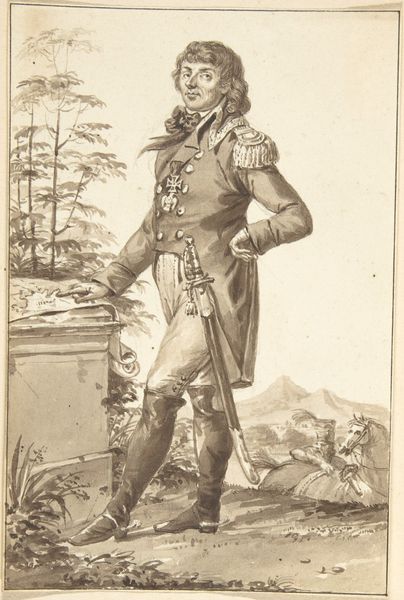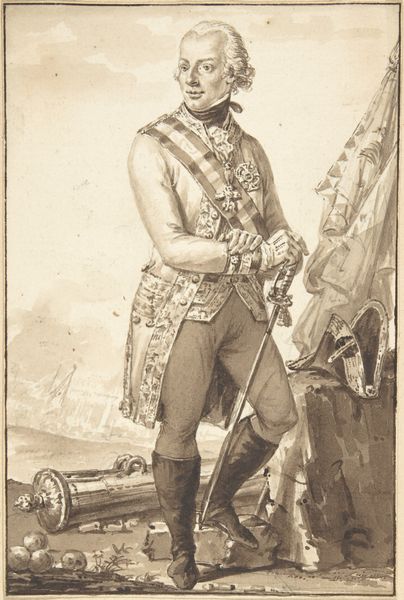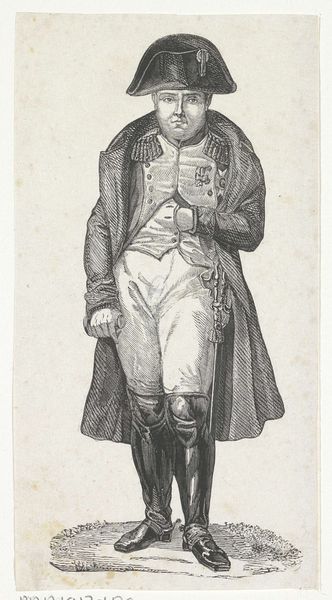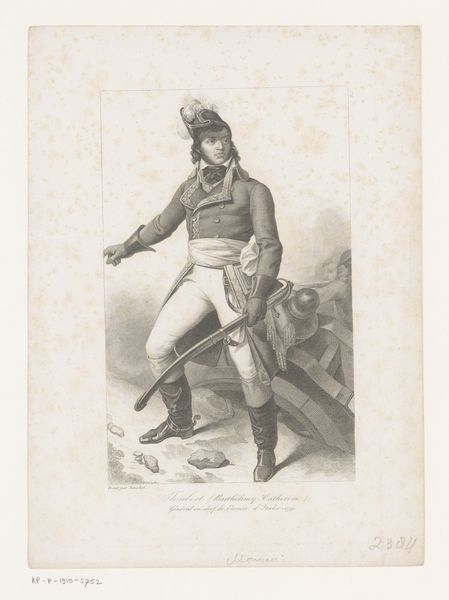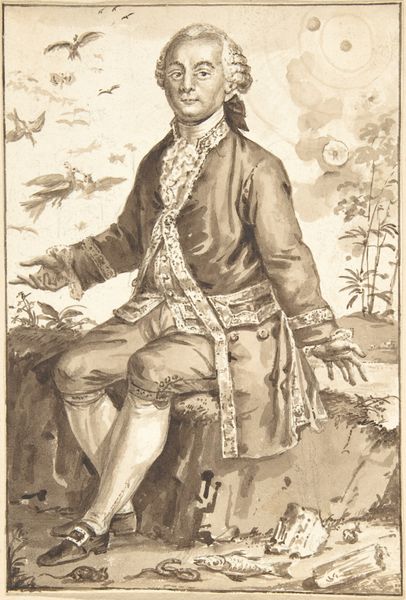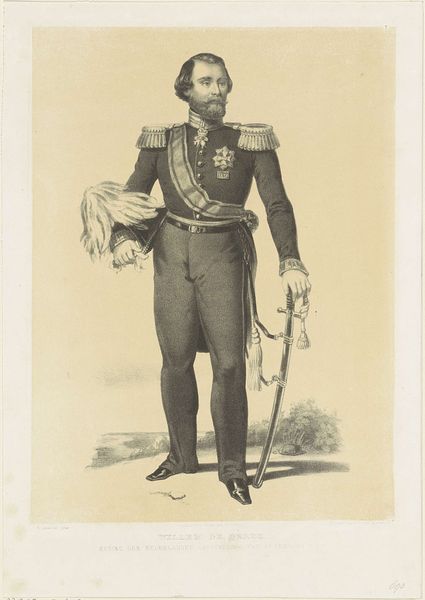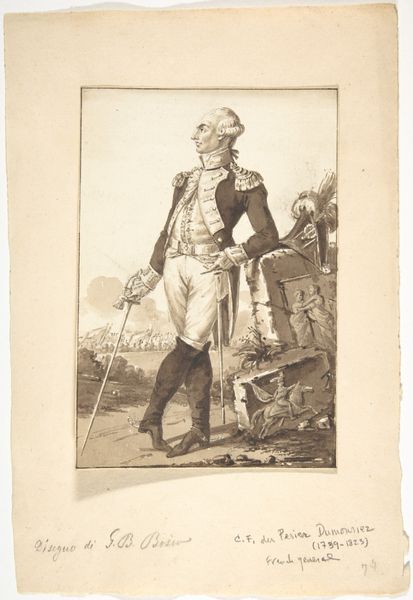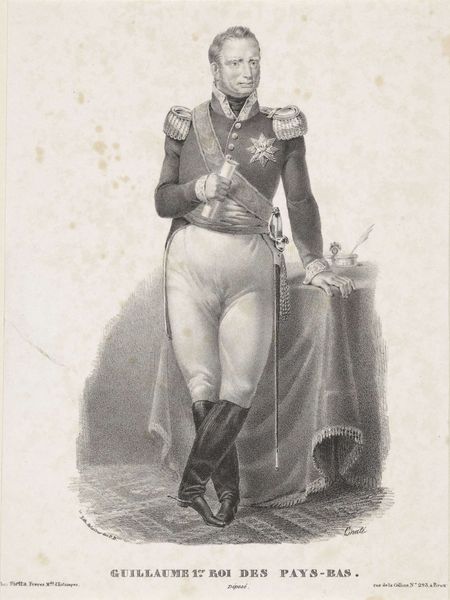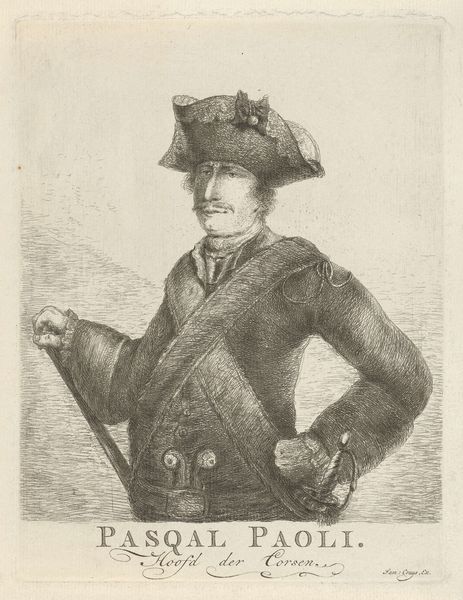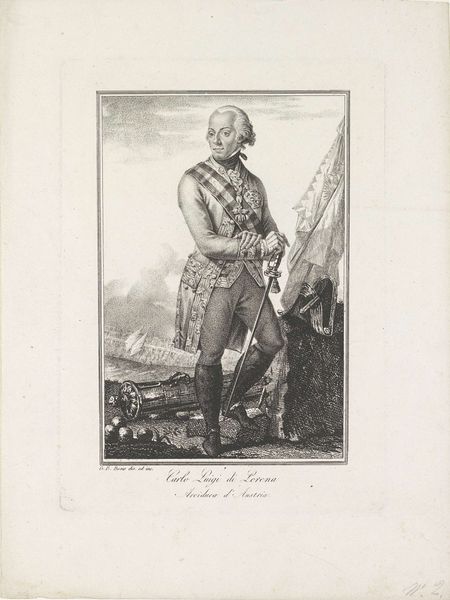
Portrait of Count Levin August von Bennigsen 1780 - 1827
0:00
0:00
drawing, ink
#
portrait
#
drawing
#
neoclacissism
#
ink
#
men
#
portrait drawing
#
history-painting
Dimensions: 6 3/4 x 4 1/2 in. (17.1 x 11.5 cm)
Copyright: Public Domain
Curator: Before us, we have a historical drawing. It’s "Portrait of Count Levin August von Bennigsen," rendered in ink, wash and graphite by Jean-Baptiste-François Bosio, likely sometime between 1780 and 1827. Editor: Ooh, dramatic! I'm getting major 'officer-on-the-precipice-of-battle' vibes. There's a stern look, a strong posture… Is that even the correct use of "precipice" here? Feels right, though! Curator: That's perceptive. Consider the visual language; Bosio employs neoclassicist principles common in depictions of powerful figures, emphasizing control, reason, and a return to order amidst revolutionary turmoil. Von Bennigsen was, after all, a prominent general. Editor: And all the shiny medals? Definitely telling! Though, honestly, his stance seems a bit awkward. Is he leaning against something? What's that behind him – a wall or badly rendered foliage? Curator: Both, I suspect! Observe how the ruined architectural element situates him within a legacy of power, a link to classical empires even as war rages behind him. That war would allude to von Benningsen's historical moment of conflict with Napoleonic France. These images are less about true representation and more about constructing identity and bolstering national narratives. Editor: Interesting point. He's less 'man' and more 'symbol.' But is there vulnerability there, too? Or maybe it’s just the sepia tones giving me sentimental feels? Curator: I read it more as calculated stoicism. Yet, his portrayal engages with discourses around military authority. Who gets remembered, how, and why? Editor: Ah, yes! Excellent question. Maybe there’s something subtly subversive about that stance then – it seems to hint at both strength and a sort of exhaustion. Which makes me wonder if he was, underneath the medals and posture, just a dude dreading another battle. Food for thought, no? Curator: Precisely. By contemplating von Bennigsen’s image, we consider how figures are framed, by whom, and for what purposes. Editor: I love a portrait that's more than just a face – this one definitely sparks a little historical intrigue, even for me. A strong point to end this walk with, thank you.
Comments
No comments
Be the first to comment and join the conversation on the ultimate creative platform.
